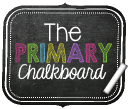It's me, Matt from Digital: Divide & Conquer, to share some of my favorite math apps for improving fact fluency (and making them more fun for the kids). I have a small bank of iPads in my room, and when they're not being used for break time to play mine craft, math fact fluency practice is the big agenda item.
Below are some of my go-to math fact fluency apps. These are the apps that keep my kids engaged, motivated to learn, and are extremely easy to use. I've been using most of these for a couple of years.
OPERATION MATH
The James Bond of math games. The time and number of problems are the villains. Speed is your friend. Games last only a minute, so my students can get in quite a few in a short time. I love this game. $

MATH HEROES
Surprisingly simple and easy to use. My students and own children love it. They seem to really enjoy the ninjas fighting (go figure). Lots of levels to choose from, about 10 problems in a level, and it moves quick. It's perfect and my students will play it forever.

OPERATION MATH SQUAD
This is the team version of Operation Math. Kids compete against the time and even against other students. Four kids can play at a time, but it's really engaging for them. Plus, if students miss a certain amount they get locked out of the game, until the next round. These games are about five minutes long. Just be ready for the kids to get loud when they play. $

SUSHI MONSTER
Monsters and sushi. The kids eat this up, no pun intended. It's from Scholastic and fun and easy to use. It's new to me, but my students are quick to use it. It'll be on our iPads for awhile.

MATH VS ZOMBIES
Exactly what it says it is, math and zombies. Knock out the zombies with math facts. It's gone through a few updates and keeps improving. They've also added more number sense and counting to the app, which is definitely a plus. $$

YODEL OH!
Made by the same company who did Operation Math, it reminds me of the Price Is Right game with the yodeler. Same great music too. It's awesome. $

These are my six go to math fluency apps. Most can be changed for addition, subtraction, multiplication, and division. They're also game based, which is pretty important for the kids because math facts can be pretty boring. I don't blame them. Sure, most of them cost $2.99 --but based on my bad math it averages out to about three cents a week. I'll take it.




































